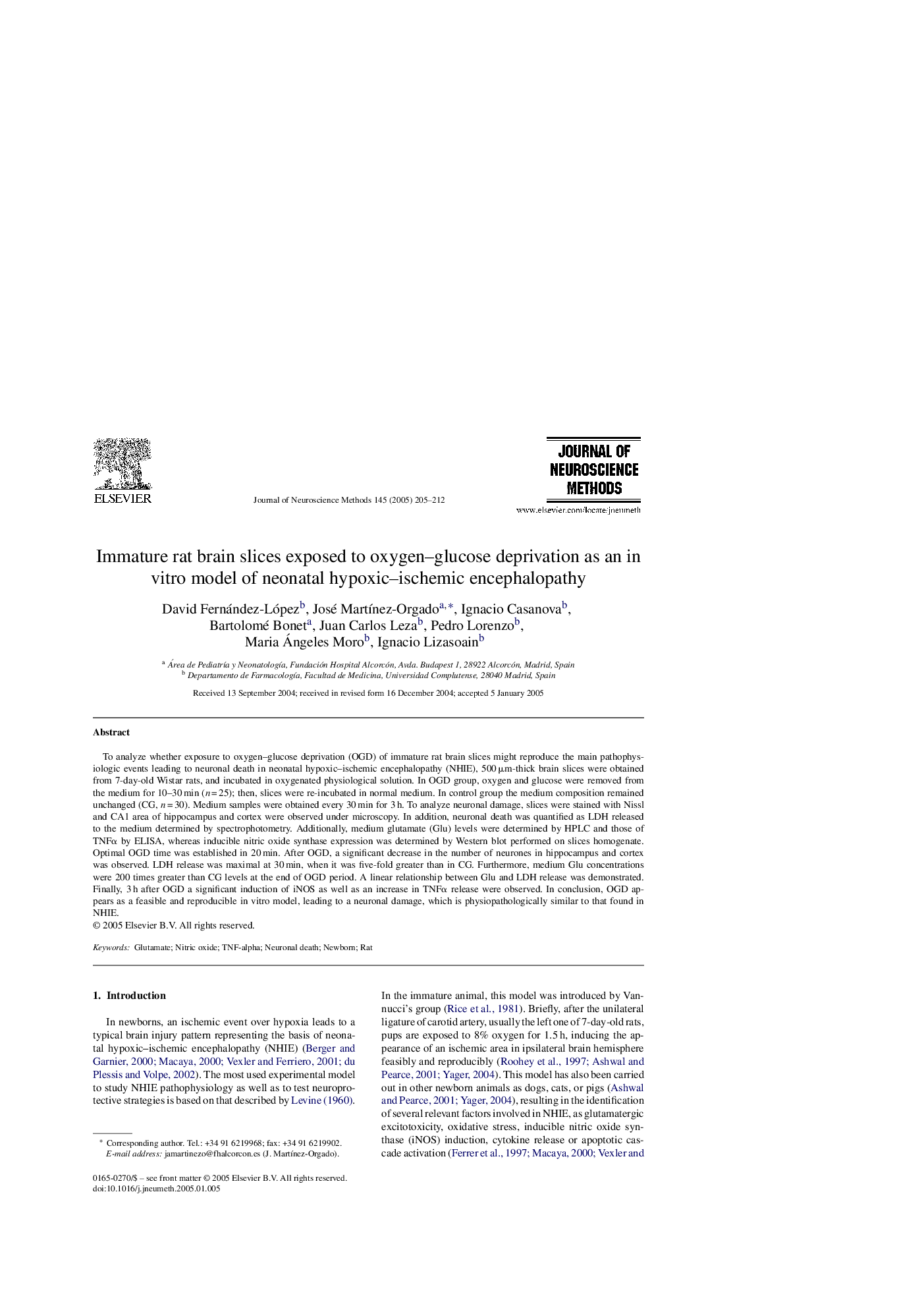| Article ID | Journal | Published Year | Pages | File Type |
|---|---|---|---|---|
| 9424210 | Journal of Neuroscience Methods | 2005 | 8 Pages |
Abstract
To analyze whether exposure to oxygen-glucose deprivation (OGD) of immature rat brain slices might reproduce the main pathophysiologic events leading to neuronal death in neonatal hypoxic-ischemic encephalopathy (NHIE), 500 μm-thick brain slices were obtained from 7-day-old Wistar rats, and incubated in oxygenated physiological solution. In OGD group, oxygen and glucose were removed from the medium for 10-30 min (n = 25); then, slices were re-incubated in normal medium. In control group the medium composition remained unchanged (CG, n = 30). Medium samples were obtained every 30 min for 3 h. To analyze neuronal damage, slices were stained with Nissl and CA1 area of hippocampus and cortex were observed under microscopy. In addition, neuronal death was quantified as LDH released to the medium determined by spectrophotometry. Additionally, medium glutamate (Glu) levels were determined by HPLC and those of TNFα by ELISA, whereas inducible nitric oxide synthase expression was determined by Western blot performed on slices homogenate. Optimal OGD time was established in 20 min. After OGD, a significant decrease in the number of neurones in hippocampus and cortex was observed. LDH release was maximal at 30 min, when it was five-fold greater than in CG. Furthermore, medium Glu concentrations were 200 times greater than CG levels at the end of OGD period. A linear relationship between Glu and LDH release was demonstrated. Finally, 3 h after OGD a significant induction of iNOS as well as an increase in TNFα release were observed. In conclusion, OGD appears as a feasible and reproducible in vitro model, leading to a neuronal damage, which is physiopathologically similar to that found in NHIE.
Related Topics
Life Sciences
Neuroscience
Neuroscience (General)
Authors
David Fernández-López, José MartÃnez-Orgado, Ignacio Casanova, Bartolomé Bonet, Juan Carlos Leza, Pedro Lorenzo, Maria Ángeles Moro, Ignacio Lizasoain,
